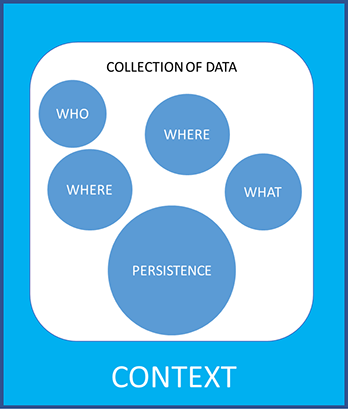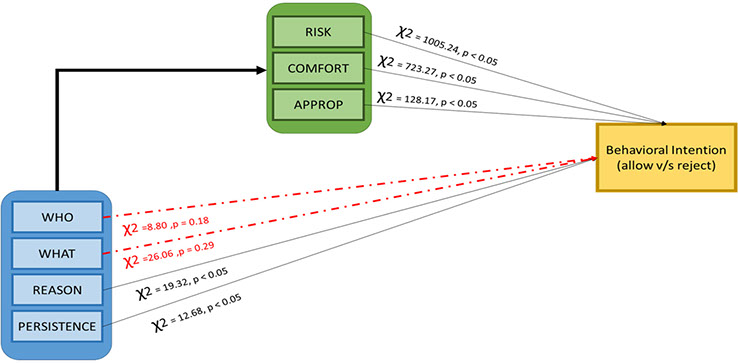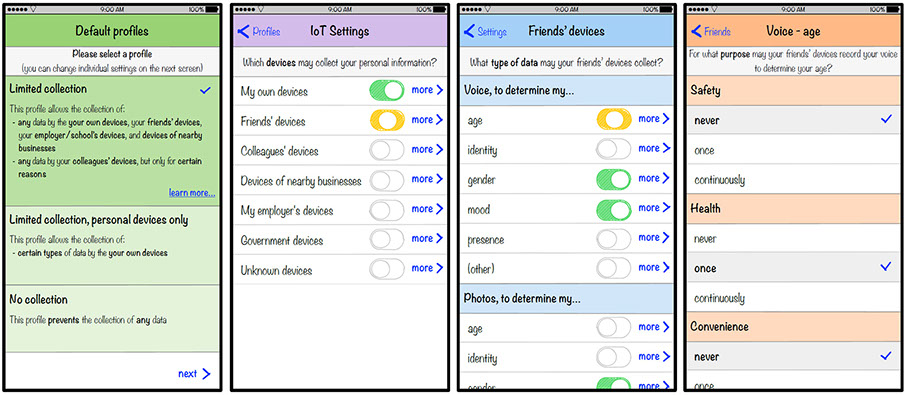Generalized IoT Environments &
Privacy Decision Making
PARITOSH BAHIRAT
UX Researcher | Designer
The Challenge
- IoT serves as a platform to connect a multitude of devices.
- Smart Environments like Smart cities of future will have numerous sensors which may want to consistently access information of a person moving around in the environment.
- Notifications as a means of privacy management may not work because of intrusiveness and eventual choice overload for the user
- The context in which privacy needs to be managed is much more broader as compared to any other IoT like Smarthome or Healthcare

Design of Experiment
- Contextual scenarios were presented to 200 participants
-
Scenario is a combination of 5 different parameters
- Who
- What
- Where
- Reason
- Persistence
- Each participant is shown 14 scenarios
A device of a friend (Who) records your video to detect your
presence (What). This happens continuously (Persistence), while you are at someone else’s place (Where), for your safety (Persistence)
-
Participants answered two types of questions:
- Attitude (Is this scenario Risky? Are you Comfortable with This scenario?)
- Decision (Would you allow/reject this scenario?)

Results and Design
- 'Who', as in which IoT device is trying to access information in the provided context has the strongest effect on decision
- The effect of parameters (Who, What...) on Behavioral Intention (Allow/Reject) is Mediated by attitudes (Risk, Comfort, Appropriates)
- 'Where', as in the location where information is being exchanged does not have a significant effect on Behvioral Intent.
- Since 'Who' has the main effect on participant behavior, hence it is shown to the user at the very first page of UI.
